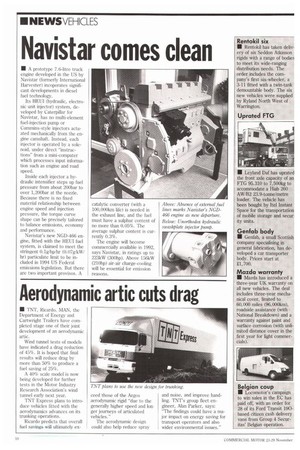Navistar comes clean
Page 12

If you've noticed an error in this article please click here to report it so we can fix it.
• A prototype 7.6-litre truck engine developed in the US by Navistar (formerly International Harvester) incoporates significant developments in diesel fuel technology.
Its HEUI (hydraulic, electronic unit injector) system, developed by Caterpillar for Navistar, has no multi-element fuel-injection pump or Cummins-style injectors actuated mechanically from the engine camshaft. Instead, each injector is operated by a solenoid, under direct "instructions" from a mini-computer which processes input information such as engine and road speed.
Inside each injector a hydraulic intensifier steps up fuel pressure from about 200bar to over 1,200bar at the nozzle. Because there is no fixed material relationship between engine speed and injection pressure, the torque curve shape can be precisely tailored to balance emissions, economy and performance.
Navistar's new NGD-466 engine, fitted with the HEUI fuel system, is claimed to meet the stringent 0.1g/hp/hr (0.07g/kW/ hr) particulate limit to be included in 1994 US Federal emissions legislation. But there are two important provisos. A catalytic converter (with a 100,000km life) is needed in the exhaust line, and the fuel must have a sulphur content of no more than 0.05%. The average sulphur content is currently 0.3%.
The engine will become commercially available in 1992, says Navistar, in ratings up to 223kW (300hp). Above 156kW (210hp) air-air charge-cooling will he essential for emission reasons.




































































































































































